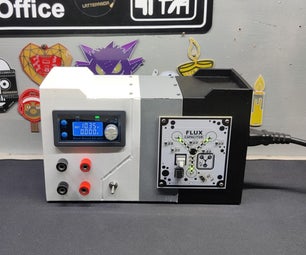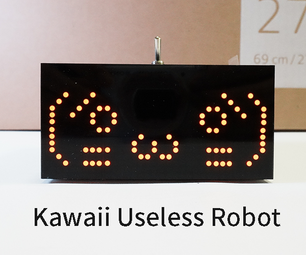Introduction: COVID-19 WHO Dashboard
This instructables show how to use ESP8266/ESP32 and LCD to build a COVID-19 situation WHO dashboard.
Step 1: Data Source: WHO Coronavirus Disease (COVID-19) Situation Dashboard
The project data source is come from The World Health Organization (WHO) Coronavirus disease (COVID-19) Situation Dashboard:
Step 2: Hardware Preparation
ESP8266/ESP32 Dev Board
Any ESP8266/ESP32 Dev Board should be ok.
LCD Display
Any Arduino_GFX supported LCD is ok, you may find currently supported display at GitHub readme: https://github.com/moononournation/Arduino_GFX
Breadboard
Any breadboard that can fit for the ESP Dev Board and LCD Display.
Jumper Wire
Some Jumper Wires, depends on the dev board and LCD pins layout. In most case 6-9 male to female jumper wires are enough.
Step 3: Hardware Assembly
Push the ESP32 Dev Board on the breadboard and connect LCD with jumper wires.
Here are the sample connection summary:
ESP8266 -> LCD
Vcc -> Vcc GND -> GND GPIO 15 -> CS GPIO 5 -> DC (if available) RST -> RST GPIO 14 -> SCK GPIO 12 -> MISO (optional) GPIO 4 -> LED (if available) GPIO 13 -> MOSI / SDA
ESP32 -> LCD
Vcc -> Vcc GND -> GND GPIO 5 -> CS GPIO 16 -> DC (if available) GPIO 17 -> RST GPIO 18 -> SCK GPIO 19 -> MISO (optional) GPIO 22 -> LED (if available) GPIO 23 -> MOSI / SDA
Step 4: Software Preparation
Arduino IDE
Download and install Arduino IDE if you are not yet do it:
https://www.arduino.cc/en/main/software
ESP8266 Support
Follow the Installation Instructions to add ESP8266 support if you are not yet do it:
https://github.com/esp8266/Arduino
ESP32 Support
Follow the Installation Instructions to add ESP32 support if you are not yet do it:
https://github.com/espressif/arduino-esp32
Arduino_GFX Library
Download latest Arduino_GFX libraries: (press "Clone or Download" -> "Download ZIP")
https://github.com/moononournation/Arduino_GFX
Import libraries in Arduino IDE. (Arduino IDE "Sketch" Menu -> "Include Library" -> "Add .ZIP Library" -> select downloaded ZIP file)
Step 5: Compile & Upload
- Download the program at GitHub: (press "Clone or Download" -> "Download ZIP") https://github.com/moononournation/COVID-19_WHO_Da...
- Open COVID-19_WHO_Dashboard.ino with Arduino IDE
- Fill your WiFi AP settings into SSID_NAME and SSID_PASSWORD
- If you are not using ILI9341 LCD, comment out line 125 and uncomment the correct LCD class declaration
- Connect ESP Dev Board to computer
- Press Upload button to compile and upload the program to the ESP Dev Board
Step 6: Options
- who_adm0_url and who_adm0_new_conf_url is retrieving "China" figure, you can change the value near
"where=ADM0_NAME%3D%27China%27" to your country
- who_adm1_url is retrieving "Hong Kong SAR" figure, you can change the value near "where=ADM1_NAME%3D%27HONG+KONG+SAR%27" to your province, autonomous region, and municipality
- Arduino_GFX library support many size LCDs, the font sizes auto change according to the screen size. I have tested in ST7735 (128 x 160), ILI9341 (240 x 320), ST7796 (320 x 480). You may need make some adjustments for other screen size.
Step 7: Limitation
WHO dashboard figures are according to Coronavirus disease (COVID-2019) situation reports:
https://experience.arcgis.com/experience/685d0ace5...
The figures are update in daily basis and expected have some delay.
Step 8: Happy Quarantine!
This is the time to avoid social contact and stay at home :(
This is also the best time to study on electronics, programming and IoT!











